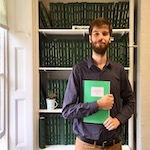Richard Bellis
Trading Body Parts in Britain, 1750-1850

Richard’s project maps the circulation of high-value body parts - such as pathological specimens and Egyptian mummies - through networks of trade. His focus is on demonstrating how such trade shaped medical teaching and research with medical collections during the nineteenth century.
During this period, the collection of body parts became the almost exclusive domain of medical practitioners (Chaplin 2009, 107), anatomical preparations became central to anatomical teaching and study (Bellis 2019), and from the start of the nineteenth century institutional medical museums became the foundation of medical teaching (Alberti 2011). Hitherto, work on these themes has focused on the significance of (a) large proprietor-formed anatomical collections in the eighteenth century and (b) large institutional museums attached to medical schools in the nineteenth century. In contrast, this project will locate such collections as nodes within a wider map of networks of collectors, traders, benefactors and beneficiaries that crossed antiquarian, scientific, and medical interests and expertise. By doing so the project will explore the role that auction sales, small-scale collectors, and provincial collecting played in the move from proprietor to institutional collections and the creation of anatomical and pathological knowledge.
In this initial stage of the project, Richard is developing a sample database of pathological specimens that circulated in the various private anatomy schools of Manchester in the 1820s and 1830s. This will provide crucial insights into the scope of pathological collecting in Manchester, and demonstrate who and how Manchester’s early medical collections were shaped by trading in body parts.
